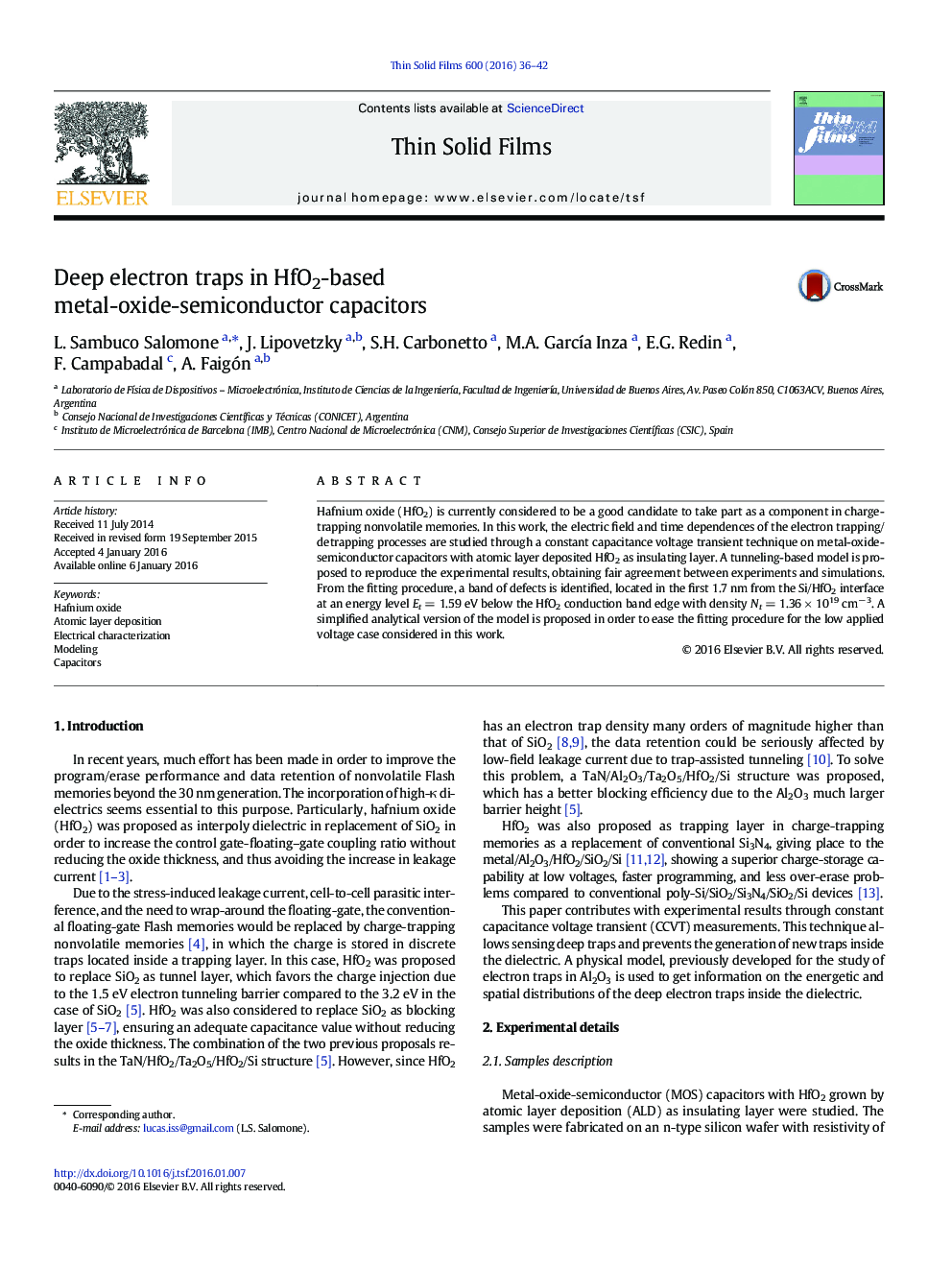| Article ID | Journal | Published Year | Pages | File Type |
|---|---|---|---|---|
| 1664179 | Thin Solid Films | 2016 | 7 Pages |
•We characterized deep electron trapping/detrapping in HfO2 structures.•We modeled the experimental results through a tunneling-based model.•We obtained an electron trap energy level of 1.59 eV below conduction band edge.•We obtained a spatial trap distribution extending 1.7 nm within the insulator.•A simplified tunneling front model is able to reproduce the experimental results.
Hafnium oxide (HfO2) is currently considered to be a good candidate to take part as a component in charge-trapping nonvolatile memories. In this work, the electric field and time dependences of the electron trapping/detrapping processes are studied through a constant capacitance voltage transient technique on metal-oxide-semiconductor capacitors with atomic layer deposited HfO2 as insulating layer. A tunneling-based model is proposed to reproduce the experimental results, obtaining fair agreement between experiments and simulations. From the fitting procedure, a band of defects is identified, located in the first 1.7 nm from the Si/HfO2 interface at an energy level Et = 1.59 eV below the HfO2 conduction band edge with density Nt = 1.36 × 1019 cm− 3. A simplified analytical version of the model is proposed in order to ease the fitting procedure for the low applied voltage case considered in this work.
